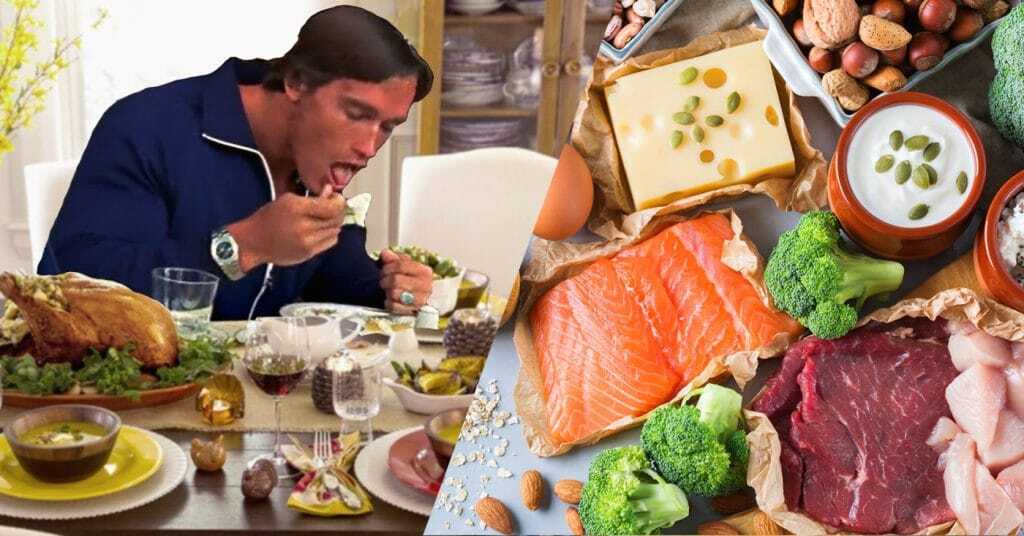How to Lose Weight Without Dieting – And Keep it Off!
Dieting sucks! And, to make matters worse, most people soon regain whatever weight they lose. It’s time to stop dieting and look at a better, more sustainable way to get and stay lean.
When it comes to losing weight, most people are very quick to jump on the latest diet bandwagon. They Google “best fat loss diet” and usually choose the one that comes out at the top of their search.
Invariably, this diet is very strict, bans all your favorite foods, or causes severe hunger. Diets are nobody’s idea of fun!
Armed with their new and probably celebrity-endorsed diet, our weight-loss wannabe spends the next week or two eating like someone who is allergic to food. They survive on meals that would barely sustain a mouse, let alone a fully-grown adult.
They tough it through hunger and cravings and use their willpower to stick to their new eating plan. And, at first, the diet works. They lose weight, and they lose it fast.
But after a few weeks, the inevitable starts to happen:
- Hunger becomes too powerful to ignore
- Cravings are constant
- Boredom sets in
- Energy levels start to fall
- Willpower begins to fail
Enough is enough; our dieter decides to allow themselves a cheat meal, which soon becomes a cheat day, and then a cheat week. Invariably, they quit their diet, go back to eating “normally,” and quickly regain whatever weight they’ve lost.
In many cases, dieters actually overeat and gain back more weight than they lost!
A few months or years later, our overweight subject decides it’s time to try losing weight again, and surprise, surprise, the same thing happens. Fitness experts call this cycle yoyo dieting.
The good news is that you don’t have to be a yoyo dieter, and in this article, we reveal how to lose weight without dieting and then keep it off forever.
The Rules of Easy Weight Loss
Nobody enjoys dieting, and dieting doesn’t work, so it’s time to stop looking for short-term fixes and adopt a more sustainable, long-term approach to weight loss. Instead, follow these rules and lose weight without dieting.
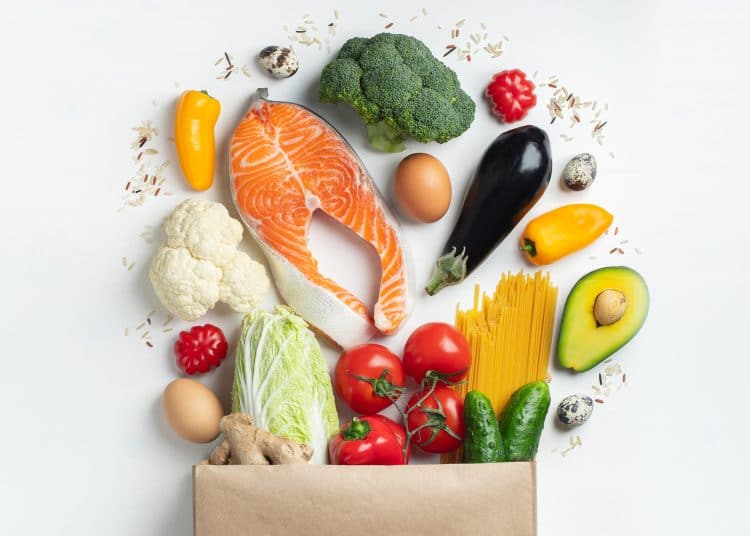
Rule #1 – Don’t diet!
Despite our anti-diet rant, some of you reading this article will STILL try dieting that excess weight off. Don’t do it! Diets are too restrictive for long-term use, make you miserable, cause hunger, and trigger cravings. It’s no wonder that most diets are only really designed to last 4-8 weeks.
Popular diets include:
- Paleo Diet
- Keto / ketogenic Diet
- Carnivore Diet
- Plant-based Diet
- Intermittent Fasting
While all of these diets can help you lose weight, they’ll only work for as long as you can stick to them. If you start the carnivore diet, which involves eating nothing but meat, but dreams of fruit and vegetables keep you awake at night, it won’t be long until you quit.
For a diet to work, you need to be able to maintain it. Not for a week or a month, but for as long as it takes you to reach your target weight AND for as long as you want to maintain your target weight.
So, forget the idea of eating healthily for a week or a month. You need to change the way you eat for the foreseeable future. In other words, probably FOREVER!
Rule #2 – Manage your calorie intake
To burn fat for fuel and lose weight, you MUST burn more calories than you consume (1). This rule is UNBREAKABLE. Body fat is stored energy. If you eat more calories than you burn, your body will convert that unused energy into fat. One pound of fat is roughly equal to 3,500 calories.

While you could try and exercise those excess calories away, if you eat too much, you’re going to have to commit to working out every day and probably for hours at a time. A single missed workout will undermine your weight loss efforts.
For this reason, managing your calorie intake is your best strategy. This doesn’t mean adopting a very low-calorie diet. Instead, it simply means balancing your caloric intake with your everyday needs, properly called your Total Daily Energy Expenditure (TDEE).
You can use complex calculations to determine your TDEE, but you’ll find it much easier to use our TDEE Calculator in dashboard section. Just type in the required information, and you’ll instantly learn how many calories you need to eat to maintain your current weight.
Then, subtract 300-500 calories from that number. That’s how much you need to eat to lose weight without starving yourself and without following a hideously restrictive diet. In fact, you can eat whatever you like. Providing you eat the correct number of calories, it doesn’t really matter much where they come from.
After all, 300 calories of candy, 300 calories of oatmeal, and 300 calories of quinoa all provide your body with the exact same amount of energy.
This doesn’t mean you should eat unhealthily, as eating for weight loss should also be good for your health. However, you certainly don’t need to give up your favorite foods. You’ll just need to eat less of them.
Use a food tracking app to record and control how many calories you eat per day. It only takes a few minutes, but it will save you months and even years of wasted time and effort.
Rule #3 – Optimize your metabolism with exercise
Your metabolism is your energy expenditure per day. While eating less will help you lose weight, burning more calories per day will make the process easier. For starters, increasing your energy expenditure means you’ll create a more significant calorie deficit. It also means you can eat a little more without canceling out your calorie deficit.

The easiest way to get your metabolism buzzing is through exercise.
When it comes to weight loss, most people automatically gravitate toward steady-paced cardio. That’s hardly surprising, given that cardio mainly uses fat for fuel. However, cardio burns relatively few calories and only increases your metabolism while you are doing it.
You NEED to do some cardio because it’s good for your cardiovascular health, but doing too much is both unnecessary and could even undermine your weight loss. Chronic cardio can cause muscle loss, which results in a decrease in your TDEE.
Instead, the best types of exercise for long-term weight loss are:
- Strength training
- Interval training
Strength training
Strength training (lifting weights) will preserve or even increase your muscle mass, leading to an increase in your TDEE. Muscle is metabolically active tissue, which means it uses calories. The more muscle you have, the more calories you’ll burn per day, even while you are sleeping. Just a slight increase in muscle mass can make losing and maintaining your weight much easier.
Also, strength training causes a short-term increase in your metabolic rate. For 16-24 hours after your workout, your caloric expenditure increases as your body gets busy with the anabolic processes of muscle repair and growth.
Finally, strength training increases insulin sensitivity, which means the food you eat, especially carbs and protein, is more likely to be stored in your liver and muscles and not in your fat cells. Again, this effect lasts around 16-24 hours.
Interval training
Interval training has many of the benefits of strength training, but it also burns more calories. It is much more time-efficient than steady-paced cardio too. There are lots of ways to do interval training, but, in simple terms, this type of workout involves alternating between brief periods of exercise and periods of rest.
For example:
- Jump rope for 60 seconds, rest for 60 seconds, repeated 8-times
- Sprint for 30 seconds, walk for 60 seconds, repeated 10-times
- Row hard for three minutes, easy for one minute, repeated 6-times
- Kettlebell swings for 20 seconds, rest for 10 seconds, repeated 8-times (Tabatas)
Ideally, you should try and accumulate around five hours of metabolism-boosting exercise per week. Choose activities you enjoy and look for ways to make working out as convenient as possible.
Like a diet, if you don’t enjoy what you’re doing, or it proves to be more trouble than it’s worth, you are less likely to do it. So, if you don’t enjoy or have time to go to a commercial gym, look at ways to work out at home, and consider building a garage gym.
Here’s a sample weekly schedule. Just slot your preferred workout into this framework:
| Monday | Tuesday | Wednesday | Thursday | Friday | Saturday | Sunday |
| Intervals | Strength training | Intervals | Rest | Strength training | Intervals | Rest |
Or, if you enjoy strength training more than cardio:
| Monday | Tuesday | Wednesday | Thursday | Friday | Saturday | Sunday |
| Strength training | Intervals | Strength training | Rest | Strength training | Intervals | Rest |
You could do more exercise than this, but it shouldn’t really be necessary. Also, it’s important to note that exercising more is often accompanied by an increased appetite. Needless to say, eating more will cancel out the benefit of doing more exercise.
Rule #4 – Modify your meals to prevent hunger
Earlier, we said that, providing you consume fewer calories than you need, you will lose weight, no matter what you eat. This is still true! However, you’ll lose weight and keep it off more easily if you modify at least some of your meals to make them more filling.
Hunger is the enemy of weight loss. When you eat less, your body mistakenly believes you are in danger of starving, and it uses hunger to motivate you to eat. It doesn’t realize that you have chosen to eat a little less. Stupid body!
So, anything you can do to derail hunger will help stop the overeating that will derail your weight loss efforts.
Sugars and refined carbs are very high in calories and digested quickly, which is why you can a) eat a lot of them and b) feel hungry soon after. Because of this, you should do your best to cut down on foods like:
- Candy
- Pastries
- White bread
- Soda
- White rice
- Takeouts
- White pasta
- Pre-packaged convenience food
We’re not saying you CAN’T eat these foods because this ISN’T a diet. However, eating less refined food and sugar will mean you can eat more healthy food, and you’ll have less hunger to contend with.
To lose weight without dieting, build your meals like this:
Protein
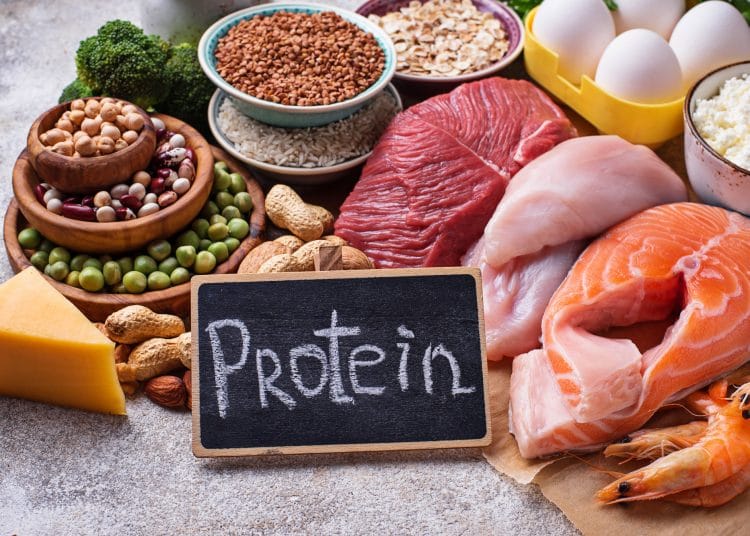
Protein – the first thing to consider when building the perfect weight loss meal is protein. Good choices include lean meat, chicken, fish, eggs, nuts, and beans. You need protein for recovery, muscle repair, and growth.
Protein is also very satiating (filling), and eating it provides your metabolism with a small but meaningful boost.
Vegetables
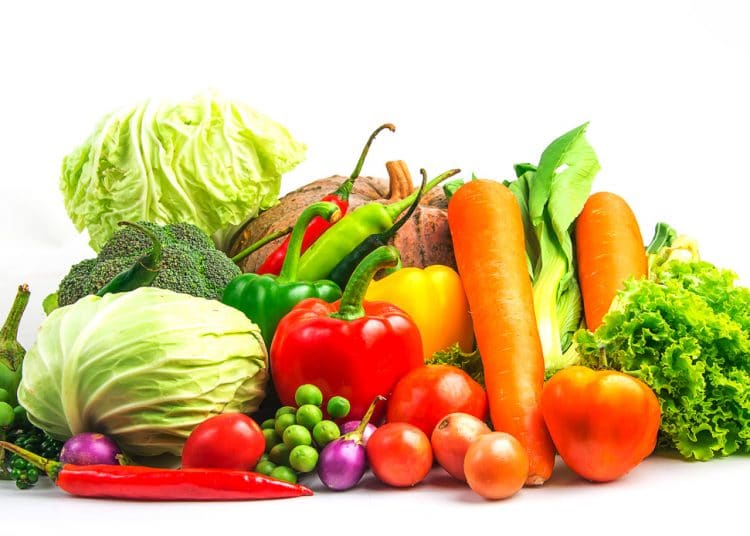
Veggies are low in calories, high in fiber, very nutritious, and filling too. With the exception of potatoes, you can eat almost unlimited amounts of vegetables and still lose weight. Feeling hungry? Eat more veggies!
Healthy Fats
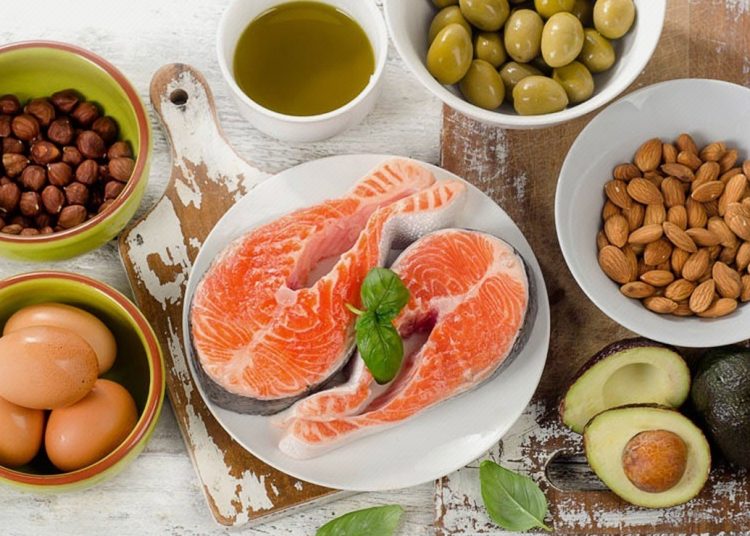
Contrary to popular belief, healthy fats are not necessarily fattening. Like protein, dietary fats are satiating, and things like mono and polyunsaturated fats are very healthy. Good sources of healthy fats include olive oil, avocados, egg yolks, and fish.
Eating a LITTLE less fat will save you some calories, but it would be a huge mistake to eliminate fat from your diet entirely.
Carbohydrates
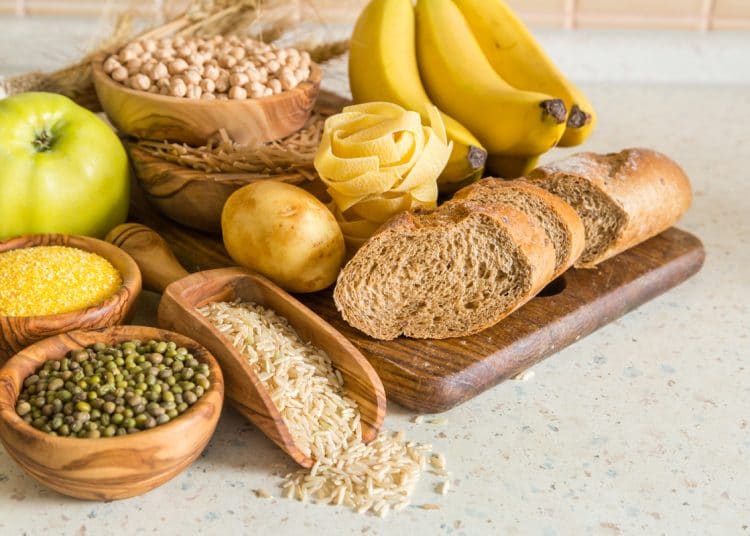
Vegetables contain varying amounts of carbs, but it’s usually relatively low. More obvious sources of carbs include rice, pasta, bread, potatoes, and cereals. Some diets ban these foods, but that usually results in cravings. Instead, eating these foods in moderation will help keep cravings at bay and also give you energy.
You don’t have to eat this way all the time, but the more of your meals that follow these guidelines, the easier you’ll lose weight.
Regarding meal frequency, just eat whenever it’s convenient. You could eat three equal-sized meals per day and two small snacks, or just eat two large meals a day and no snacks. Ultimately, Meal frequency isn’t all that important. However, you should try and eat a protein-rich meal after exercise, so your body has the resources it needs for recovery, repair, and muscle growth.
Your total daily calorie intake is much more important than whether you eat twice or six times a day, so focus on the amount of food you eat instead.
Rule #5 – Sit less, move more
Eating less, eating healthier, and exercising more will help create the caloric deficit that you need to lose weight and keep it off without dieting. But, the more sedentary you are, the less impactful these interventions will be.

Even the most ardent exerciser probably only clocks up about 5-6 hours of physical activity per week, which leaves a whopping 160+ hours of potential inactivity. During this time, your metabolism slows to a crawl, and that means slower weight loss, too.
In studies, increased levels of physical activity lead to faster, easier weight loss and prevent weight gain and regain (3). That doesn’t mean you need to exercise more, only that you need to sit less. Experts call this additional movement Non-Exercise Activity Thermogenesis, or NEAT for short.
Examples of NEAT include:
- Bowling
- Carrying groceries back from the store
- Cycling for transport
- DIY projects
- Doing a quick bodyweight circuit when you wake up
- Dusting
- Exploring your city
- Gardening
- Going on a hike
- Mowing the lawn
- Playing with your kids
- Raking leaves
- Recreational sports
- Shoveling snow
- Swimming for pleasure
- Taking the dog for a walk
- Taking out the trash
- Vacuuming
- Walking for transport
- Washing dishes
- Washing the car
NEAT activities are easy, aren’t tiring, and won’t interfere with your workouts. However, being more active will significantly increase your energy expenditure, leading to easier weight loss and maintenance. In addition, being more active can help offset the dangers of sedentarism, which has been shown to have a very negative impact on general health (4).
Rule #6 – Stick with it!
Temporary changes produce temporary results. That’s why short-term diets and unsustainable workout regimens don’t work. As soon as you stop, you’ll end up right back where you started – overweight, unhealthy, and unhappy.

While all of the rules outlined above will help you lose weight without dieting, they’ll only work if you follow them. You need to commit to the process!
That doesn’t mean you need to be 100% compliant, but you should do your best to follow the rules 80-90% of the time. For most people, that will be enough to provide you with the results you want. That said, 100% compliance will mean you get better results and lose weight faster.
The most important thing to remember about successful weight loss and weight management is that they’re long-term processes. They aren’t fads, and they don’t work overnight. Instead, you need to start and stick with it. This is a marathon and not a sprint.
You’ve tried dieting, and it didn’t work, which is why you’re reading this article in the first place. It would be madness to keep doing the same thing over and over and expect a different outcome. You’ll fail each and every time.
Instead, put these rules into action. While you won’t lose ten pounds in two weeks, you will start losing weight slowly and comfortably, and you’ll keep it off too. The entire process should be much more enjoyable as well.
Wrapping Up
Diets don’t work – period. They’re too strict, unpleasant, or impractical for long-term use. Most dieters lose weight for the first few weeks but then quit or cheat and regain most if not all of the weight they worked so hard to lose.
If you’ve had enough of yoyo dieting, starving yourself, unpleasant cravings, and long or exhausting workouts, it’s time to try a different approach to weight loss. That doesn’t mean another short-term diet, but a sensible and sustainable approach to losing weight and keeping it off.
Use these six rules to lose weight and keep it off without dieting.
